I have a Visual Studio setup project. Upon installation, it creates an uninstall batch file in the application folder. IF the user wants to uninstall the product, he can go to "Add/Remove Programs", or he can just double-click the uninstall.cmd. The contents are:
%windir%\system32\msiexec /x {CC3EB7BF-DD82-48B9-8EC5-1B0B62B6D285}
The GUID there is the ProductCode from the Setup Project in Visual Studio.

But, in order for upgrades to work properly, I have to increment the Version number, every time I produce a new MSI. And, if I increment the Version number, then I also have to generate a new Guid for the ProductCode. Which means the static uninstall.cmd file needs to change.
How can I dynamically generate a batch file that contains the ProductCode for the, at build time?